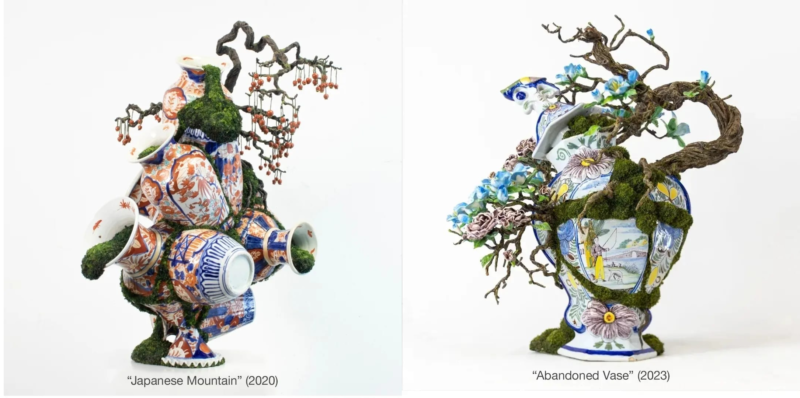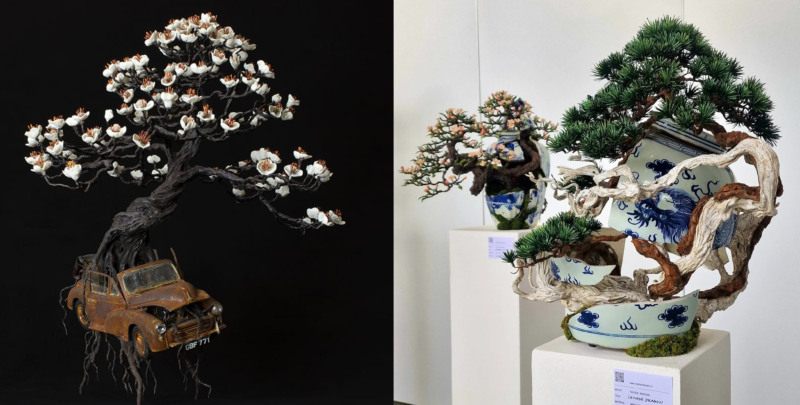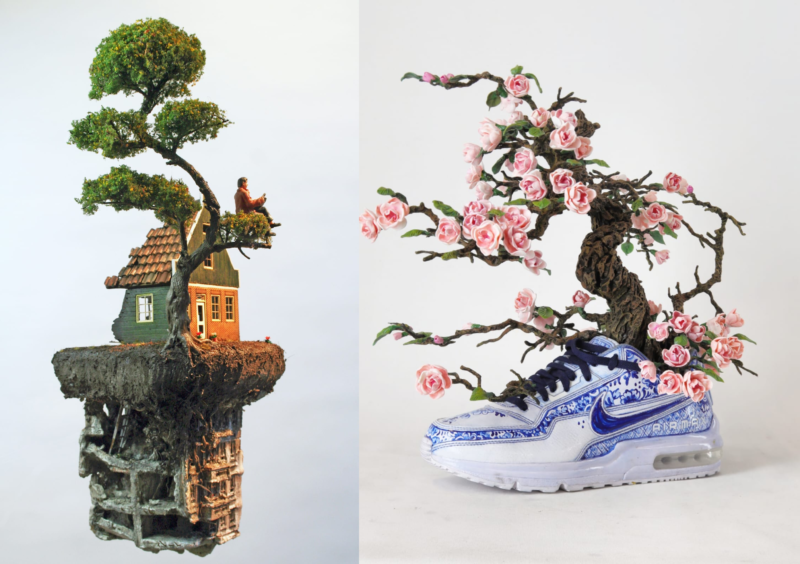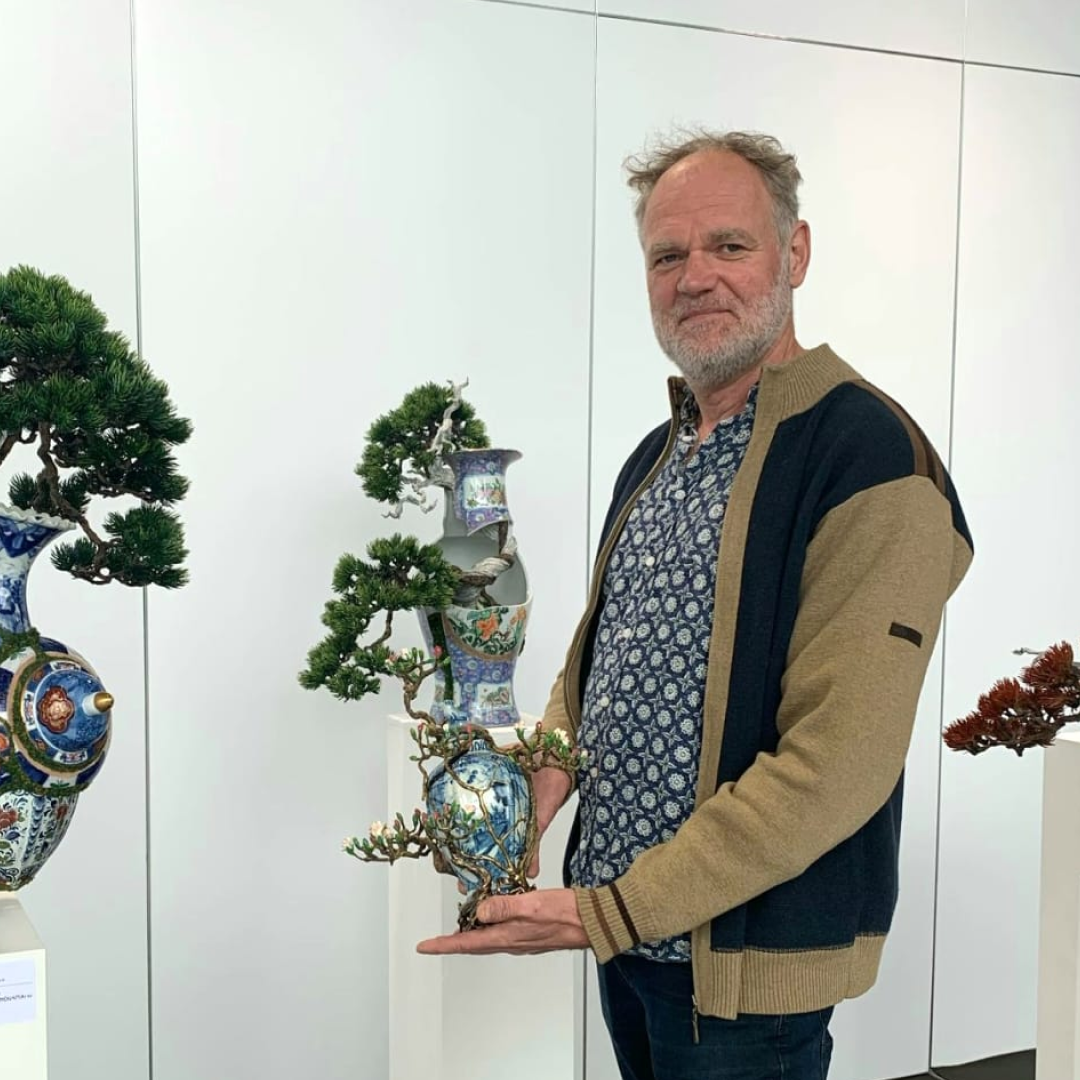Each sculpture by Dutch artist Patrick Bergsma is a hymn to the victory of nature's power over man and his creations. It could be said that his objects express what everyone fears and at the same time anticipates with reverence. In his whimsical ceramic works, he combines Western art traditions with the ancient Chinese art of bonsai.
The sculptor is constantly busy participating in exhibitions and working on new artworks in his studio, which meant that arranging the interview took considerable time.
In an interview for Fine Art Shippers, artist Verita Amare Et discussed with Patrick Bergsma the philosophy of life balance, the concept of destruction, the audience's understanding of art, the future of humanity, and his latest series titled "Expanding China" for the recent exhibit at "Art Karlsruhe" in Germany, among other topics.
Artist Talk: Patrick Bergsma on Why Nature Always Wins
What drives you to create? How does this relate to your choice of ceramics as a material?
Patrick Bergsma: Most of the time, I say that my art is driven by the power of nature.By that, I mean the energy that underlies everything. The Chinese have a word for it: "Chi." They tell a fascinating story about the universe's origin. In the beginning, there was only the dragon. But he was alone and could not experience anything. When he sneezed (chi), a pearl came out of his nose. He started to chase it, and from the movement of this dance, all matter in the universe was born. I use nature in the form of bonsai as a symbol of the power of nature. Long ago in China, Buddhist monks took gnarly tiny trees they found in the mountains back to their monasteries to meditate on the power of nature. This was the origin of bonsai.
The shiny ceramics can be seen as typical of our human culture and form a nice contrast with the natural elements.
What is the most important thing in life?
My family and my art are the two most important things in my life. When I look at my art, I often see what I would have liked to have done differently or what I want to create next. Sometimes, I am surprised by it and take a moment to reflect on how I made it. I view it from the perspective of the creator. From the reactions of others, I can sense whether I have accomplished what I intended to express or not.

What is the message you look to convey through your art?
Earth has survived five mass extinctions in which most life on the planet died. The resilience of life is what interests me. What lies beneath this will to live and adapt to every new situation? I think it is a mistake to view humans as separate from nature. We should see ourselves much more as part of it all. If we want to survive, we need to act more in balance with our planet.
Your artwork powerfully illustrates a fundamental truth: nature's victory is inevitable, and human creations are but temporary. It beautifully imagines an ideal world where all things grow and bloom freely, a vision that resonates deeply with me. It suggests that if not for human interference, there would be abundance for every creature on Earth. Nature's relentless struggle against asphalt and concrete, reclaiming its space through disasters like earthquakes and floods, raises important questions about our impact and relationship with the natural world. In your opinion, do you think we will ever be able to live in full harmony with nature?
It would be great, and in theory, it is possible. Throughout the history of Homo sapiens, this has never truly happened. Everywhere we appeared some animals, especially the larger ones, became extinct, were outnumbered, or were domesticated. I think the last decade has been the best in our history. Surprisingly enough, the chance of being killed by another Homo sapiens has been the lowest in this decade. So, maybe we are heading towards something better. Let's hope so.
How do you feel when you observe someone attempting to go against nature rather than looking for harmony with it?
Some people live in harmony with nature, while others do not. I try to express harmony in my work, and I hope my viewers can relate to that.
What are your thoughts on the motivations of other artists? What should they aim to achieve? How should they, and you, use art as a language to express and reveal to the world?
Each artist has their own concept of what they work for. There is no single ideal or universal truth.

What purposes do artists serve, and why do they exist? Is their role a mission or entertainment?
Art can do so many things. It can wake up and comfort people; it can be political, humorous, or spiritual. So artists are needed in many ways, and making art can be all of those things too.
Where do you live and why? Where would you like to live?
I am very happy where I currently live and work, in the countryside of North Holland. My studio is on an old farm that has been transformed into a workspace for many artists. It's a place I used to play as a kid. I would, however, like to spend some months in winter in a warmer climate.
What do people say about your art?
What's nice about being at a fair near my work is that people don't realize I am the artist. This means they give their honest opinions without feeling the need to be polite. They often describe my work as 'out of the box' or say they have never seen anything like it before. Many believe the bonsai or vegetation in my work are real, which I take as a huge compliment because I try to make it realistic.
What are your plans for the future with your arts and life?
I see that my art is becoming more and more well-known. I would like this growth to continue, as it would make it easier to realize many of the ideas that I still have.

Interview by Verita Amare Et Photo courtesy of Patrick Bergsma
